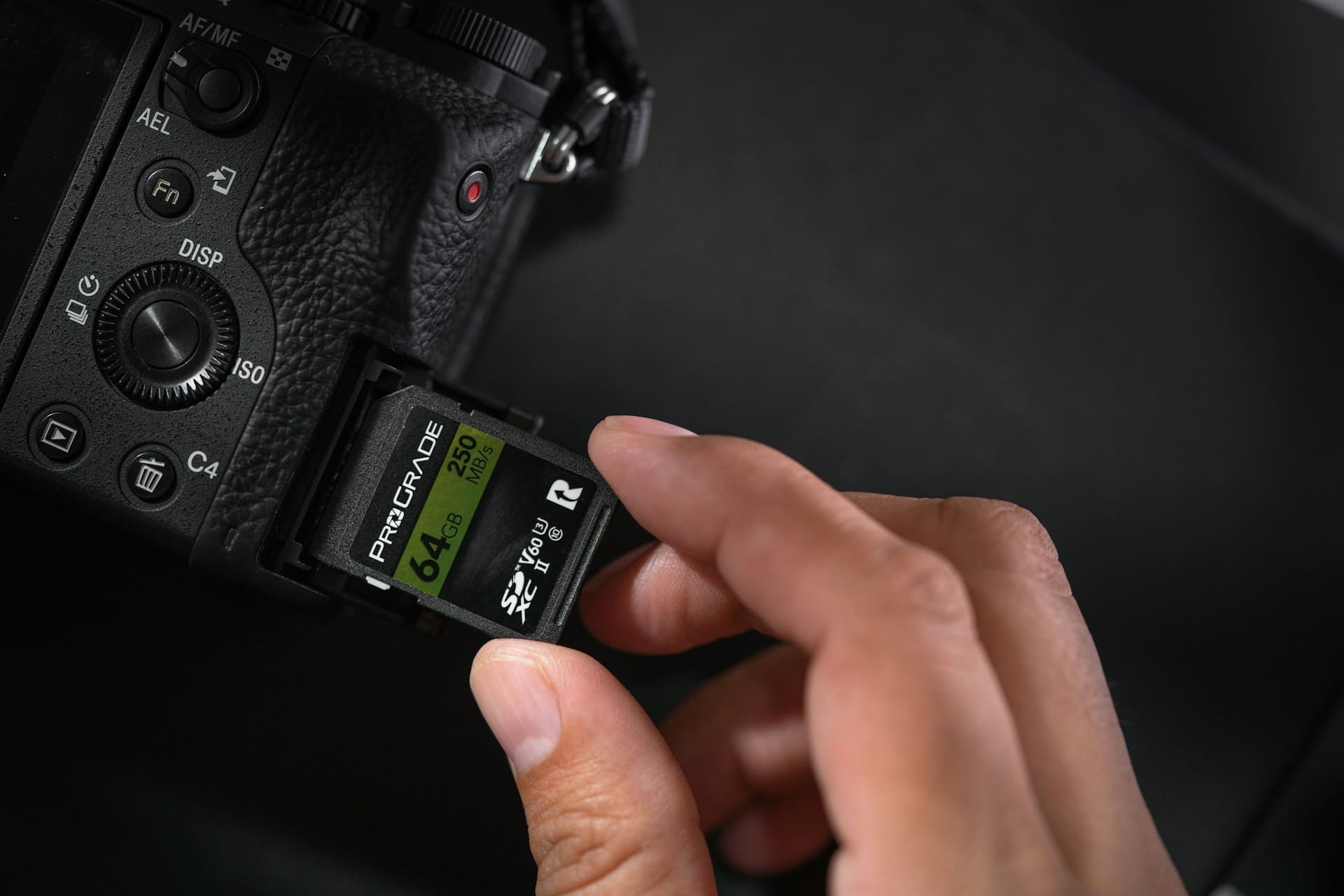In the year 2000, when mobile phones could barely store a few text messages and digital cameras were just starting to become popular, three tech giants — SanDisk, Panasonic, and Toshiba — introduced a new portable storage standard: the Secure Digital (SD) card. Its first version had a maximum capacity of 8 MB, enough only for a handful of low-resolution photos or some compressed music files.
Twenty-five years later, the story of the SD card is one of continuous evolution, driven by industry collaboration, advances in flash memory, and the increasing demand for portable devices. Today, you can find cards with up to 1 TB on the consumer market and a theoretical specification (SDUC) reaching 128 TB, all maintaining the same tiny format that fits on your fingertip.
The emergence of a global standard
In the 1990s, the memory market was fragmented with multiple formats: CompactFlash, SmartMedia, Memory Stick, MMC (MultiMediaCard), among others. Each manufacturer favored its own, making compatibility difficult and hindering mass adoption.
The alliance between SanDisk, Panasonic, and Toshiba in 1998 aimed to solve this problem by creating a universal, compact, and scalable format. The result was the SD card, officially introduced in 2000 alongside the creation of the SD Association (SDA), responsible for defining and promoting the standard.
In less than a year, more than 70 companies had joined the association; by 2010, that number surpassed 1,000. This massive collaboration explains why SD became the most popular standard in digital cameras, phones, portable gaming consoles, and later, drones, GPS devices, and automotive systems.
Evolution of capacity and generations
Since its launch, the SD card has gone through four major generations, each designed to overcome the capacity and speed limitations of the previous one.
SD (2000)
– Max capacity: 2 GB
– Filesystem: FAT16
– Main uses: compact digital cameras and PDAs
SDHC – High Capacity (2006)
– Max capacity: 32 GB
– Filesystem: FAT32
– Innovation: support for HD video recording
SDXC – eXtended Capacity (2009)
– Max capacity: 2 TB
– Filesystem: exFAT
– Uses: 4K video, RAW photography, advanced smartphones, and camcorders
SDUC – Ultra Capacity (2018)
– Theoretical max capacity: 128 TB
– Speeds: up to 624 MB/s with UHS-III
– Focus: professional applications like 8K video, drones, and virtual reality
The microSD: the most popular variant
In 2005, the microSD was introduced—an even smaller format initially designed for mobile phones. Today, it is the most widely used card in the consumer market: smartphones, Nintendo Switch consoles, sports cameras, and drones rely on microSDs to store photos, videos, and games.
Despite its tiny size, the microSD can offer the same capacities and speeds as a full-sized SD card.
Speed challenges: UHS and SD Express
Capacity was not the only area of innovation. With the rise of high-definition videos, burst photography, and real-time applications, increasing read/write speeds became essential.
Speed classes (2006): introduction of “Class 2, 4, 6, 10” to indicate minimum performance in MB/s.
UHS-I and UHS-II (2010-2011): high-speed interface, up to 312 MB/s.
UHS-III (2017): doubled the limit, up to 624 MB/s.
SD Express (from 2018 onwards): integration of PCIe and NVMe, reaching speeds comparable to SSDs (over 4,000 MB/s).
Key uses that shaped its history
1. Digital cameras: the true catalyst for mass adoption in the 2000s.
2. Mobile phones: expanded memory for photos, music, and apps.
3. Portable gaming consoles: like the Nintendo Switch, which depends on microSD for storage.
4. Automotive and GPS navigation: maps and software updates.
5. Drones and action cameras: essential for 4K and 8K recording.
Comparison of SD card generations
| Generation | Year | Max Capacity | Max Theoretical Speed | Filesystem | Main Uses |
|——————|——-|—————-|———————–|————|—————————————-|
| SD | 2000 | 2 GB | 25 MB/s | FAT16 | Digital cameras, PDA |
| SDHC | 2006 | 32 GB | 50 MB/s | FAT32 | HD video, compact cameras |
| SDXC | 2009 | 2 TB | 312 MB/s (UHS-II) | exFAT | Smartphones, 4K video |
| SDUC | 2018 | 128 TB | 624 MB/s (UHS-III) | exFAT | 8K video, drones, professional use |
| SD Express | 2018+ | 128 TB | >4,000 MB/s (PCIe/NVMe)| exFAT | AI, VR, professional recording |
Challenges and future prospects
After 25 years, the SD card remains a reference, but it faces challenges in a world where more devices favor soldered internal memories and cloud storage. Nevertheless, its versatility, ease of replacement, and capacity scalability keep it relevant, especially in photography, video, and professional environments.
The future points toward greater adoption of SD Express in digital cinema cameras, virtual reality, and AI devices, where access speed is as crucial as capacity.
FAQ: Common questions about SD cards
1. What’s the difference between SD, SDHC, SDXC, and SDUC?
The main difference lies in maximum supported capacity: SD (up to 2 GB), SDHC (up to 32 GB), SDXC (up to 2 TB), and SDUC (up to 128 TB). File systems and compatible speeds also vary.
2. What does UHS mean on SD cards?
UHS (Ultra High Speed) is an interface that increases transfer speeds. UHS-I reaches 104 MB/s, UHS-II up to 312 MB/s, and UHS-III up to 624 MB/s.
3. What is SD Express?
It’s the most advanced evolution of SD cards, integrating PCIe and NVMe technologies (used in SSDs) to achieve several GB/s speeds, designed for 8K video, virtual reality, and AI applications.
4. What’s the lifespan of an SD card?
It depends on use, but they typically support thousands of write cycles. Manufacturers specify durability in terms of TBW (terabytes written).
5. Are SD cards still useful in the cloud era?
Yes. While cloud storage is practical, SD cards remain indispensable for photography, professional video recording, drones, devices without constant connectivity, and as portable, fast, and cost-effective local storage.

